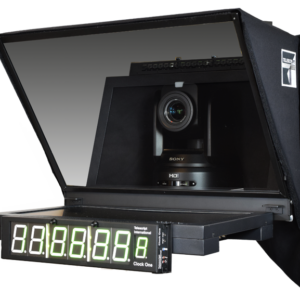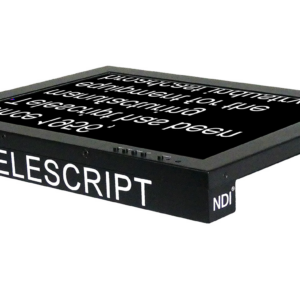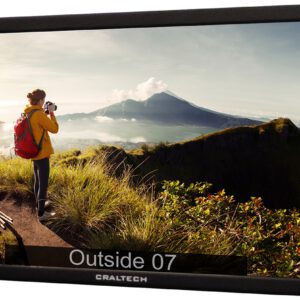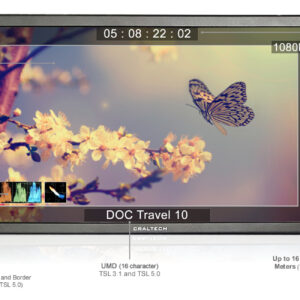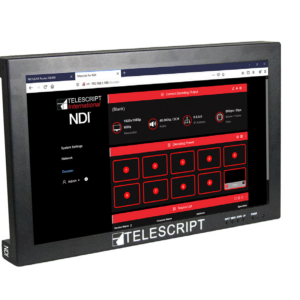There are two main types of video monitors, namely professional video on-camera monitors and professional production monitors. Both types perform the same function, but are different in design.
On-Camera Monitor
As the name suggests, an on-camera monitor is designed to attach to your camera for first-person viewing. Specific monitor mounts let you connect the monitor to your camera, providing instant feedback while you’re shooting. You can use a camera monitor with DSLR cameras and camcorders, as they’re lightweight and portable. You can also confidently use them with stabilizer rigs and camera cranes. Many have an integrated recorder, allowing you to record and play back directly from the monitor. The screen itself is an LED-backlit LCD panel, offering high contrast and a bright, high-resolution picture. These also work well in broad daylight when working outdoors. Adding professional video monitor hoods further cuts down on glare and reflections, and also protects your gear from the elements.
Production Monitor
A production monitor is a larger television-style display device. They are primarily used in production trucks, studios, and other permanent control room locations. These video monitors still provide precise color reproduction, accurate black levels, and a wide viewing angle. Just like an on-camera monitor, a production monitor includes monitoring tools such as waveform and vectorscope, as well as on-screen information displays. You can rack-mount them or sit them on a desktop with the use of monitor stands. With monitor wall mounts, you’re able to attach them to a wall, with tilt, swivel, pull-out, and articulating versions available. You can also use a professional video monitor for digital signage applications, based on their picture quality and robust components. Use monitor enclosures for information kiosks and way-finding applications, both indoors and outdoors.
-
Telescript ROBO-210-NDI 21.5″ IP PTZ Teleprompting System With NDI®
Price available on request!(Use -Add To Quote- button below.) -
Craltech CM185SL-3G 18,5″ LED Backlight LCD Monitor
Price available on request!(Use -Add To Quote- button below.) -
Telescript 21.5″ IP 1080p Reference Monitor with NDI
Price available on request!(Use -Add To Quote- button below.) -
Telescript 17.3″ IP 1080p Reference Monitor with NDI
Price available on request!(Use -Add To Quote- button below.)

